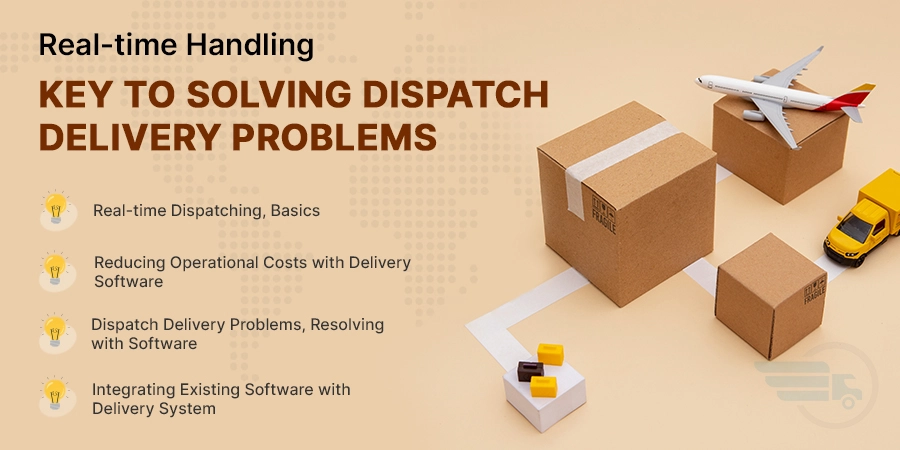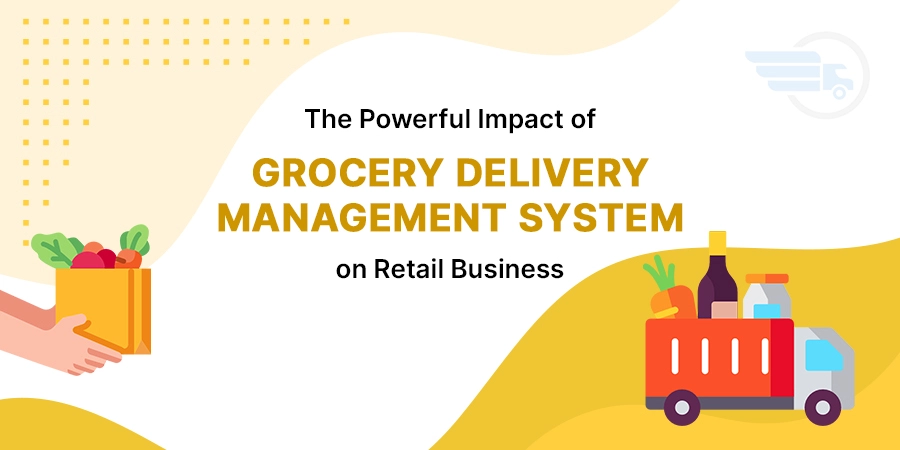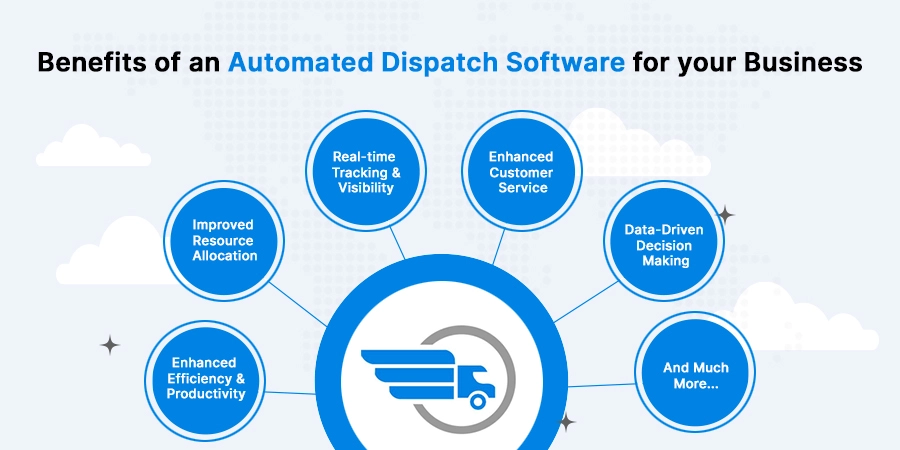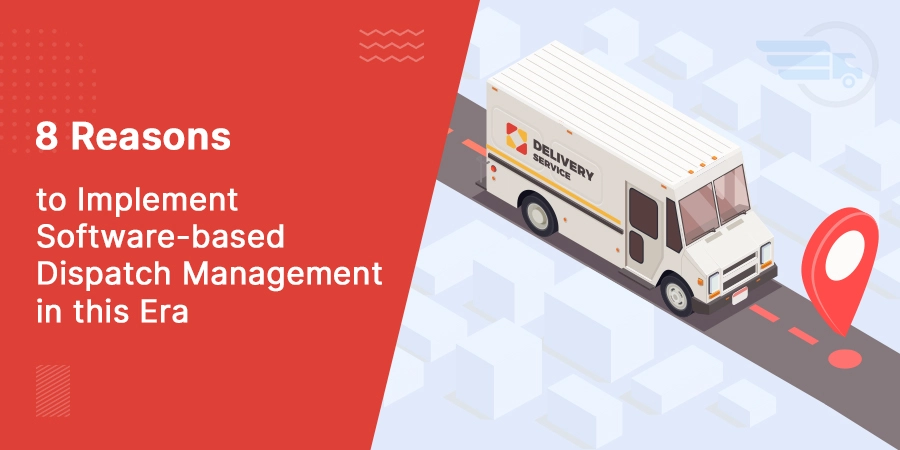Real-time Handling: Key to Solving Dispatch Delivery Problems

If you are struggling with frequent dispatch delivery problems, then this is for you. Timely and efficient deliveries are paramount, impacting customer satisfaction and brand reputation. With the right tools and strategies, you can streamline delivery operations, reduce delays, and enhance productivity.
Real-time dispatching offers an effective remedy, ensuring smooth coordination between drivers and orders, and effectively tackling the common pain points that hinder the seamless functioning of your delivery network.
Real-time Dispatching, Basics
Real-time dispatching is a pivotal logistical strategy employed by businesses reliant on timely delivery to uphold customer loyalty. It involves the instantaneous allocation of tasks and resources based on live updates and current circumstances, ensuring swift and efficient order processing and task completion.
By leveraging advanced technologies and integrated communication systems, real-time dispatching enables businesses to promptly respond to fluctuating demands, optimize routes, and efficiently manage delivery personnel. This approach significantly minimizes most dispatch delivery problems and enhances transparency. It fosters a sense of reliability, ultimately solidifying customer trust and loyalty.
In the competitive landscape of modern commerce, the implementation of real-time dispatching is instrumental in meeting customer expectations, sustaining brand credibility, and fostering long-term customer relationships.
Dispatch Delivery Problems, Resolving with Software
Dispatching software can effectively resolve several common dispatch delivery problems, streamlining operations and enhancing overall efficiency. The three prominent issues often encountered include inefficient task allocation, communication breakdowns, and delayed response to changing delivery demands.
Real-time dispatching is a pivotal logistical strategy employed by businesses reliant on timely delivery to uphold customer loyalty. It involves the instantaneous allocation of tasks and resources based on live updates and current circumstances, ensuring swift and efficient order processing and fulfillment.
By leveraging advanced technologies and integrated communication systems, real-time dispatching enables businesses to promptly respond to fluctuating demands, optimize routes, and efficiently manage delivery personnel. This approach significantly minimizes delays, enhances transparency, and fosters a sense of reliability, ultimately solidifying customer trust and loyalty.
In the competitive landscape of modern commerce, the implementation of real-time dispatching is instrumental in meeting customer expectations, sustaining brand credibility, and fostering long-term customer relationships.
1. Inefficient Task Allocation
Dispatching software provides a comprehensive overview of available resources and delivery requirements, enabling automatic task assignment based on various factors such as location proximity and driver availability. This ensures that the right tasks are allocated to the most suitable resources, optimizing delivery routes and minimizing unnecessary delays or errors.
2. Communication Breakdowns
With integrated communication features, dispatching software facilitates seamless real-time communication between dispatchers, drivers, and customers. It allows for instant updates, order modifications, and alerts, ensuring that all stakeholders remain informed throughout the delivery process. This real-time communication bridge effectively bridges potential gaps, reducing misunderstandings and enhancing overall coordination.
3. Delayed Response to Changing Delivery Demands
Dispatching software's dynamic nature allows for agile responsiveness to changing delivery demands. By continuously monitoring and analyzing real-time data, it can promptly adapt to unforeseen circumstances, such as traffic congestion or sudden order changes. The software's ability to quickly reroute deliveries and reassign tasks ensures that businesses can swiftly respond to dynamic situations, mitigating delays and maintaining customer satisfaction.
By addressing these top dispatch delivery problems, dispatching software simplifies the execution of complex tasks, leading to improved operational efficiency, enhanced customer experiences, and ultimately, the attainment of organizational goals.
Reducing Operational Costs with Delivery Software
Reducing operational costs with delivery software has become a smart option for businesses seeking to optimize their bottom line while maintaining high-quality service. In the competitive landscape of modern commerce, efficient cost management is essential for sustaining profitability and remaining competitive. Delivery software offers a multifaceted approach to cost reduction, providing businesses with the tools and insights necessary to streamline operations and eliminate unnecessary expenses.
One of the primary ways in which delivery software minimizes operational costs is through the optimization of delivery routes. By leveraging advanced algorithms and real-time data analysis, the software can identify the most efficient routes for deliveries, taking into account factors such as traffic conditions, delivery schedules, and geographical nuances. This optimized routing not only reduces fuel consumption and vehicle wear and tear but also maximizes the number of deliveries completed within a given timeframe, thereby significantly cutting down operational costs associated with delivery logistics.
Delivery software facilitates enhanced inventory management, enabling businesses to maintain optimal stock levels while minimizing excess inventory. With real-time visibility into inventory levels, businesses can accurately track stock movement, anticipate demand fluctuations, and prevent overstocking or stockouts. By efficiently managing inventory, businesses can avoid unnecessary storage costs, reduce the risk of inventory obsolescence, and allocate resources more effectively, leading to substantial cost savings.
Delivery software enhances operational transparency and accountability, thereby reducing the likelihood of errors and operational inefficiencies. Through features such as real-time tracking, digital proof of delivery, and automated order processing, businesses can minimize the occurrence of delivery errors, misplaced packages, and mismanaged orders. This heightened level of operational accuracy reduces the costs associated with order errors, re-deliveries, and customer complaints, ultimately contributing to overall cost reduction.
By embracing delivery software as a comprehensive cost-saving solution, businesses can achieve operational excellence, improve their competitive edge, and foster sustainable growth in an increasingly dynamic and demanding market.
Integrating Existing Software with Delivery System
Integrating has emerged as a crucial strategy for businesses aiming to streamline their operations and effectively address persistent dispatch delivery problems. The integration of complementary technologies not only enhances the overall efficiency and productivity of delivery processes but also empowers businesses to proactively manage and overcome various operational challenges.
One of the primary benefits of integrating is the seamless synchronization of data and processes. By integrating customer relationship management (CRM) systems, inventory management tools, and fleet management software with delivery management solutions, businesses can establish a unified and interconnected platform that enables the smooth flow of information across various operational facets. This integration fosters real-time data sharing, enabling businesses to make informed decisions, enhance coordination between different departments, and effectively manage the entire delivery lifecycle, from order processing to final delivery.
Integration facilitates enhanced communication and collaboration among stakeholders. By linking communication tools such as email, instant messaging, and voice communication systems with the delivery management platform, businesses can ensure clear and timely communication between dispatchers, drivers, and customers. This streamlined communication network not only reduces the likelihood of miscommunication and errors but also enables quick issue resolution and proactive problem-solving, ultimately enhancing the overall delivery experience.
Integrating fosters adaptability and scalability, allowing businesses to accommodate evolving market demands and dynamic customer expectations. By integrating enterprise resource planning (ERP) systems and supply chain management tools with delivery management software, businesses can effectively manage complex supply chains, expand their service offerings, and seamlessly scale their operations to meet growing customer needs. This integration enables businesses to remain agile and responsive in a competitive market, efficiently managing diverse delivery requirements and ensuring a consistent and reliable delivery experience for customers.
Integration enables businesses to leverage the power of data analytics and reporting. By integrating business intelligence tools and analytics software, businesses can gain valuable insights into delivery trends, customer preferences, and operational performance. This data-driven approach empowers businesses to identify potential bottlenecks, optimize delivery routes, and proactively address dispatch delivery problems, such as delays, route inefficiencies, and customer dissatisfaction. Through comprehensive data analysis, businesses can implement targeted strategies and operational adjustments, leading to improved delivery efficiency, reduced operational costs, and enhanced customer satisfaction.
Integration promotes operational excellence and business growth. By fostering data synchronization, enhancing communication, leveraging data analytics, and enabling scalability, this integration empowers businesses to overcome dispatch delivery problems effectively, achieve operational efficiency, and deliver exceptional customer experiences. Embracing this integrated approach not only positions businesses at the forefront of the industry but also solidifies their reputation as reliable and customer-centric delivery service providers.
In Brief
Reducing operational costs through delivery software is vital for sustainable profitability and competitive edge, achieved through optimized routing, enhanced inventory management, and improved operational transparency. Integration of existing solutions with delivery management software further strengthens operational excellence, data synchronization, and scalability, ultimately positioning businesses as customer-centric and efficient delivery service providers in the competitive market.
Addressing dispatch delivery problems demands the adoption of real-time dispatching solutions to ensure streamlined and efficient operations. The benefits of timely and accurate deliveries significantly impact customer satisfaction and brand reputation.
Leveraging advanced technology and integrated communication systems, real-time dispatching serves as a remedy for the common pain points hindering the seamless functioning of delivery networks. By promptly responding to fluctuating demands, optimizing routes, and efficiently managing personnel, businesses can foster reliability, trust, and long-term customer relationships.
Latest Posts
- Transforming E-commerce: How Seamless Order Management Enhances Customer Experience
- Fast Track Optimization: The Art and Science of the Most Efficient Route Planner
- Mastering Efficiency: The Role of Real-time Tracking Solutions in Restaurant Business
- The Future of Delivery: How Streamlined Logistics Can Transform Your Operations
- The Powerful Impact of Grocery Delivery Management System on Retail Business
- Benefits of an Automated Dispatch Software for your Business
- Six Essential Task-handling Features in Delivery Tracking System Software
- 8 Reasons to Implement Software-based Dispatch Management in this Era
- Reengineering Urban Mobility: Unveiling the Power of Dispatch Delivery Management System
- Order and Delivery Management Software: How it Streamlines Delivery Operations


